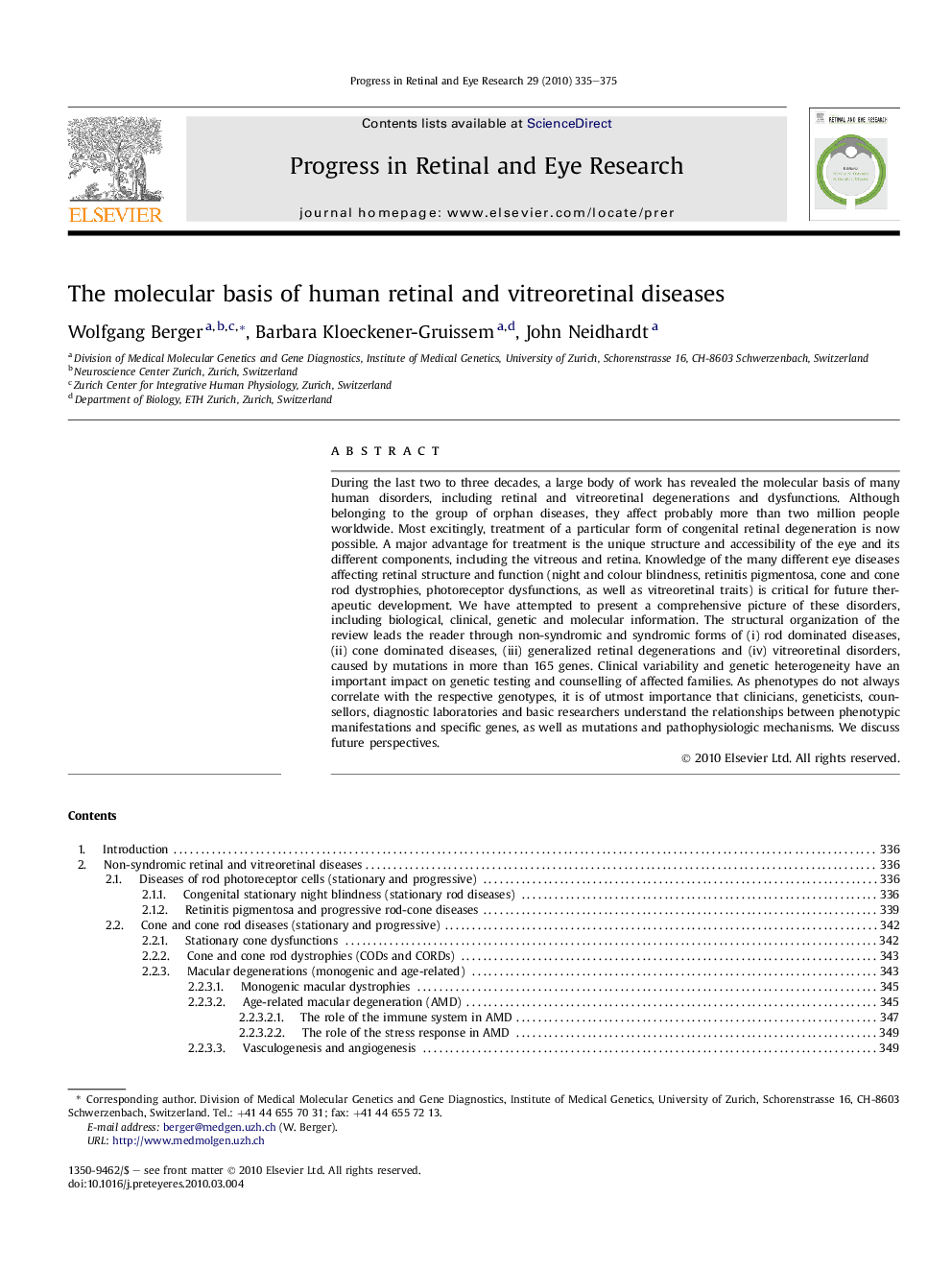| Article ID | Journal | Published Year | Pages | File Type |
|---|---|---|---|---|
| 4032052 | Progress in Retinal and Eye Research | 2010 | 41 Pages |
During the last two to three decades, a large body of work has revealed the molecular basis of many human disorders, including retinal and vitreoretinal degenerations and dysfunctions. Although belonging to the group of orphan diseases, they affect probably more than two million people worldwide. Most excitingly, treatment of a particular form of congenital retinal degeneration is now possible. A major advantage for treatment is the unique structure and accessibility of the eye and its different components, including the vitreous and retina. Knowledge of the many different eye diseases affecting retinal structure and function (night and colour blindness, retinitis pigmentosa, cone and cone rod dystrophies, photoreceptor dysfunctions, as well as vitreoretinal traits) is critical for future therapeutic development. We have attempted to present a comprehensive picture of these disorders, including biological, clinical, genetic and molecular information. The structural organization of the review leads the reader through non-syndromic and syndromic forms of (i) rod dominated diseases, (ii) cone dominated diseases, (iii) generalized retinal degenerations and (iv) vitreoretinal disorders, caused by mutations in more than 165 genes. Clinical variability and genetic heterogeneity have an important impact on genetic testing and counselling of affected families. As phenotypes do not always correlate with the respective genotypes, it is of utmost importance that clinicians, geneticists, counsellors, diagnostic laboratories and basic researchers understand the relationships between phenotypic manifestations and specific genes, as well as mutations and pathophysiologic mechanisms. We discuss future perspectives.
